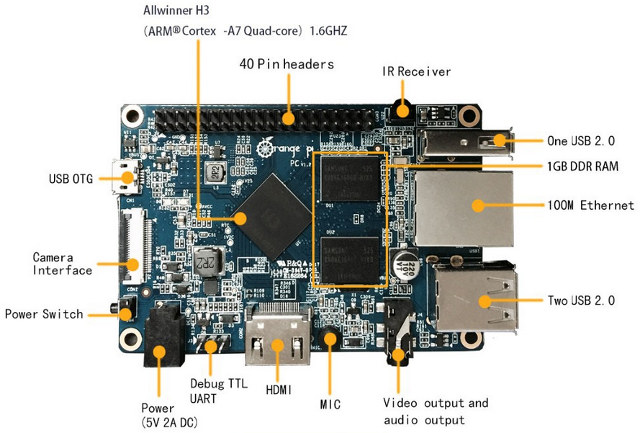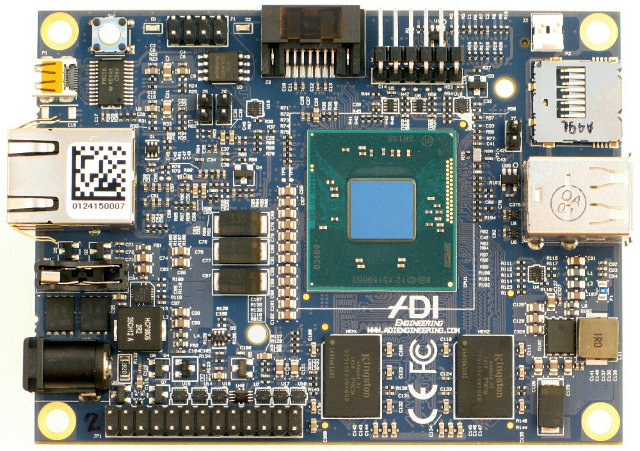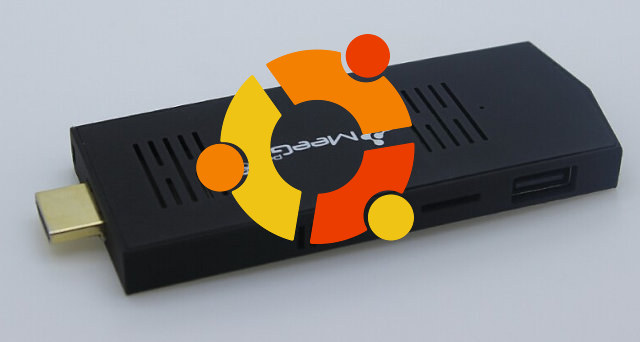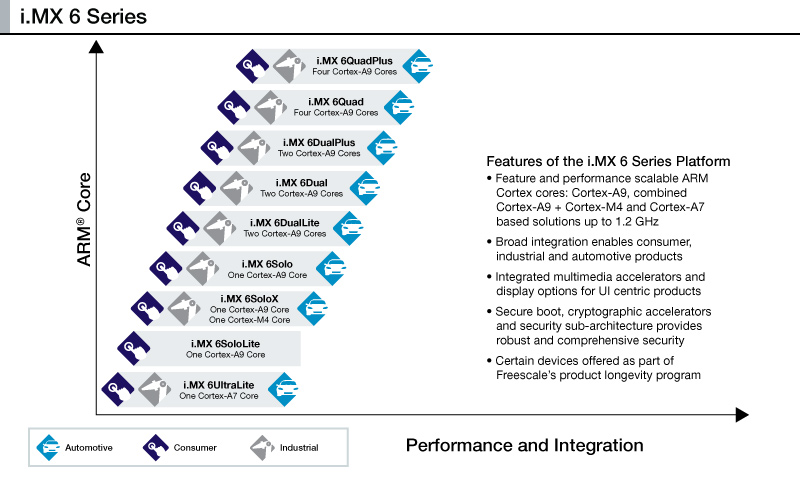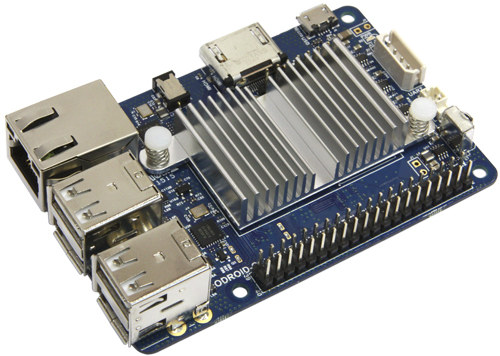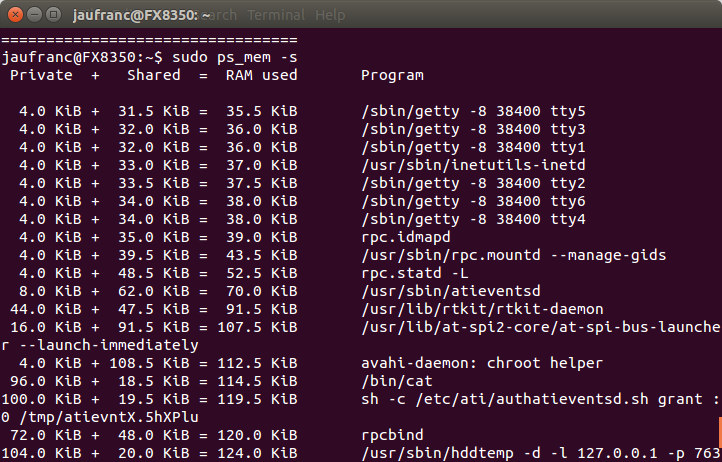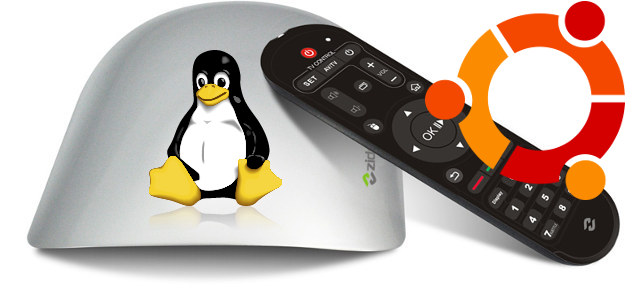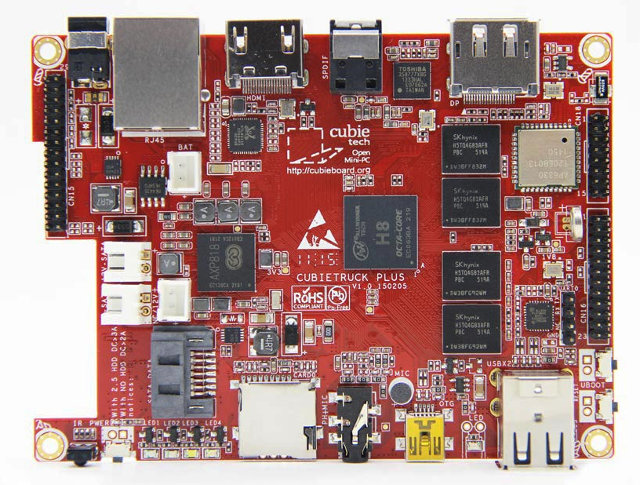Orange Pi 2 is a board powered by Allwinner H3 quad core processor that sells for $25. Shenzhen Xunlong Software has now launched a lower cost version with Orange Pi PC, still based on Allwinner H3 SoC, but getting ridiculously cheap at $15 + shipping ($3.43 in my case). Orange Pi PC specifications: SoC – Allwinner H3 quad core Cortex A7 @ 1.6 GHz (likely 1.2 GHz instead) with an ARM Mali-400MP2 GPU up to 600 MHz System Memory – 1GB DDR3 Storage – micro SD card slot (up to 64GB) Video Output – HDMI with CEC and HDCP support, AV port Audio I/O – HDMI, AV port, on-board microphone Connectivity – 10/100M Ethernet USB – 3x USB 2.0 host ports, 1x micro USB OTG port Camera – CSI Interface Expansions – 40-pin Raspberry Pi compatible header with 28 GPIOs, UART, I2C, SPI, PWM, CAN, I2S, SPDIF, LRADC, ADC, LINE-IN, […]
MinnowBoard Turbot SBC Gets an Intel Atom E3826 Dual Core Processor, FCC & CE Certification
MinnowBoard MAX launched las year as a low cost board based on Intel Bay Trail-I single or dual core processor, and was mostly targeting developers of embedded systems and hobbyists, but could not be used by OEMs as it lacked FCC & CE certifications. ADI Engineering designed a MinnowBoard compatible board named MinnowBoard Turbot with a faster Intel Atom E3826 dual core processor, FCC & CE certifications, and various other hardware modifications bringing improved HDMI, a better voltage regulator, and populating several connectors. MinnowBoard Turbot specifications: SoC – Intel Atom E3826 dual-core processor @ 1.46 GHz (7W TDP) System Memory – 2GB DDR3L 1333 MT/s (Soldered) – Options: 1GB, or 4GB DDR3L Storage – 1x Micro SD card slot, 1x SATA2 3Gb/sec, 8 MB SPI Flash for firmware (Tianocore UEFI, Coreboot / SeaBIOS) Video & Audio Output – micro HDMI connector Connectivity – 10/100/1000M Ethernet RJ-45 connector USB – 1x […]
Ubuntu 14.04.3 Desktop Image for Intel Atom Z3735F mini PCs and Sticks
If you’ve been trying to run Ubuntu on Intel Atom Z3735F, chances are that you’ve come across Ian Morrison (Linuxium) work, even MeegoPad T02 is using one of its older Ubuntu image (without his direct knowledge / authorization), and the developer has now released an Ubuntu 14.04.3 Desktop image for Intel Atom Z3735F based devices around five days after the official Canonical release. The official Ubuntu 14.04.3 includes the newer 3.19 Linux kernel from Ubuntu 15.04, and a matching X.org stack, and has been upgraded that way for hardware enablement, i.e. to support more hardware platforms. Unfortunately, the image for Z3735F is still using a 3.16 kernel because some dynamic kernel modules only work with 3.16. The image supports 32-bit and a 64-bit bootloaders and includes WiFi, Bluetooth, and Audio support. If you’d like to update Ubuntu on your device, download and flash ubuntu-14.04.3-desktop-linuxium.iso to a USB drive with ‘Rufus’ […]
Freescale i.MX6 DualPlus and QuadPlus SoCs Gets Faster 2D and 3D Graphics, Higher Memory Bandwidth
Freescale unveiled three new models for its i.MX 6 family processor for consumer, industrial and automotive markets in May. Two models are an upgrade to existing i.MX6 Quad and i.MX6 Dual processors, as the new i.MX 6QuadPlus and i.MX6DualPlus processors features four and two Cortex A9 cores, together with improved 2D and 3D GPUs delivering around 50% faster performance, an “optimized” SDRAM controller, more SRAM, and a prefetch and resolve engine. The third model, i.MX 6UltraLite, features a single ARM Cortex A7 core and hardware security, and targets applications such as electronic Point Of Sales (ePOS). That means there are now 9 i.MX6 processors, and today, I’ll focus on the two new “Plus” versions. Since they are based on the original i.MX6 Quad and i.MX6 Dual processors, the best way to have a look at these is to compare them to their predecessors. Features i.MX 6QuadPlus i.MX 6Quad i.MX 6DualPlus […]
Hardkernel ODROID-C1+ Development Board is Now Shipping for $37
We already knew Hardkernel was working on ODROID-C1+ development board, an update the popular ODROID-C1 board with the same Amlogic S805 processor, storage and memory, but with a standard HDMI port replacing the micro HDMI port, I2S support, better micro SD card and HDMI-CEC support, an micro USB OTG port that can be used to power the board, and an included heatsink. The board is now up for sale for $37, or just $2 more than the original ODROID-C1 board. ODROID-C1+ specifications: SoC- Amlogic S805 quad core Cortex-A5 processor with a quad core Mali-450MP2 GPU System Memory – 1GB DDR3 Storage – eMMC 4.5 HS200 module socket for up to 64GB storage, and UHS-1 SDR50 micro SD slot Video & Audio Output – Type A HDMI port with CEC support Connectivity – Gigabit Ethernet USB – 4x USB 2.0 host ports, 1x micro USB OTG port Expansion Headers 40-pin Raspberry […]
ps_mem Shows Programs RAM Usage in Linux
There are several ways to see how much RAM is used in a Linux system with tools like free, vmstat, top, etc…, but today I’ve come across ps_mem which displays the RAM used for each program in a neat way. The post on lintut.com explains how to install it on Centos / Fedora:
|
1 |
yum install ps_mem -y |
As a Ubuntu user, I immediately tried apt-get install ps_mem, but there isn’t such package. After running apt-file search, I found it in w3af-console package:
|
1 2 3 |
sudo apt-get install w3af-console sudo chmod +x /usr/share/w3af/core/controllers/profiling/ps_mem.py sudo ln -s /usr/share/w3af/core/controllers/profiling/ps_mem.py /usr/sbin/ps_mem |
Another way to install the script is to simply get it from Github. Running the command without options will list of programs with RAM usage from the smallest to the largest:
|
1 2 3 4 5 6 7 8 9 10 11 12 13 14 15 16 17 18 19 20 21 |
sudo ps_mem Private + Shared = RAM used Program 4.0 KiB + 33.0 KiB = 37.0 KiB inetutils-inetd 4.0 KiB + 35.0 KiB = 39.0 KiB rpc.idmapd 4.0 KiB + 39.5 KiB = 43.5 KiB rpc.mountd 4.0 KiB + 48.5 KiB = 52.5 KiB rpc.statd 8.0 KiB + 62.0 KiB = 70.0 KiB atieventsd 44.0 KiB + 46.5 KiB = 90.5 KiB rtkit-daemon 96.0 KiB + 18.5 KiB = 114.5 KiB cat ............ 150.5 MiB + 5.1 MiB = 155.6 MiB gimp-2.8 186.5 MiB + 9.5 MiB = 196.0 MiB plugin-container 270.8 MiB + 12.1 MiB = 282.9 MiB compiz 348.5 MiB + 19.0 MiB = 367.5 MiB nautilus 409.3 MiB + 3.4 MiB = 412.7 MiB thunderbird 393.8 MiB + 28.0 MiB = 421.8 MiB Xorg 2.1 GiB + 11.0 MiB = 2.1 GiB firefox --------------------------------- 5.0 GiB ================================= |
You can also check the full command line for the programs: sudo ps_mem -s Private + Shared = RAM used Program 4.0 KiB + 31.5 KiB = 35.5 KiB /sbin/getty -8 38400 tty5 4.0 KiB + 32.0 KiB […]
How to Install and Run Linux on Zidoo X1 TV Box
Now that I’ve completed Zidoo X1 review, I’ve decided to try out Ubuntu on the mini PC following a tip from one reader that Orange Pi 2 images can run on the platform since it’s based on the same Allwinner H3 processor, but with some limitations such as WiFi not working. There are three Linux firmware images for Orange Pi 2 on the download page: Lubuntu, Raspbian, and Debian server. I decided to go with Lubuntu image. First you need to download Lubuntu_1404_For_OrangePi2-mini2_v0_8_0_.img.xz image from Google Drive or Baidu, uncompress it, and then flash the image to a Class 10 micro SD card in Windows or Linux. I ran the following command line in a computer running Ubuntu 14.04:
|
1 |
sudo dd if=Lubuntu_1404_For_OrangePi2-mini2_v0_8_0_.img | pv | sudo dd of=/dev/sdX bs=16M |
Where X in sdX is the letter of your micro SD card, which you can find with lsblk. In some platforms, it might be /dev/mmcblkX instead of /dev/sdX. Once it’s […]
Cubieboard 5 (aka CubieTruck Plus) Development Board is Powered by Allwinner H8 SoC
Merrii unveiled H7 Hummingbird board based on Allwinner H8 octa core Cortex A7 processor a few days ago, but it turns out they’ve not been the only ones working on a board with that processor, as Cubietech also showcased prototypes of Cubieboard 5, which they also call CubieTruck Plus, around mid July. They’ve only shown pictures of the board, without much more information, but we can derive most specifications from the pictures: SoC – AllWinner H8 octa-core ARM Cortex-A7 processor @ up to 2.0GHz with PowerVR SGX544 GPU @ up to 700MHz System Memory – 2GB RAM (4x H5TQ4G63AFR-PCB DDR3 chips) Storage – FORESEE eMMC or NAND flash + micro SD card slot + SATA port (via GL830 USB 2.0 to SATA bridge) Video Output – HDMI and DisplayPort Audio – HDMI, optical S/PDIF, 3.5mm headphone jack, built-in microphone Connectivity – Gigabit Ethernet (RTL8211E), dual band WiFi 802.11 b/g/n and […]


